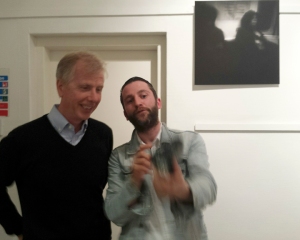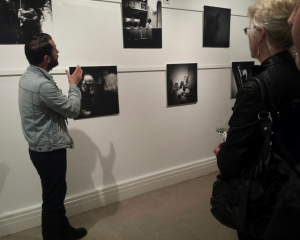Street photography has changed beyond description in the past couple of decades.
From the halcyon days of Bresson and Doisneau in Paris, roaming the city and capturing it’s people clearly and precisely in moments which have been crystallised forever. Photography itself has changed.

As digital technology took hold in the early part of the century people’s attitudes and understanding of the camera changed. No longer was photography something of a dark art, understood by only those few willing to put the time and effort into learning about chemicals and reactions while simultaneously investing relatively large amounts of money into equipment and consumables. Almost everyone now has access to a camera, from the smartphone to more easily accessible digital SLR’s and it has undoubtedly had an affect on the medium.
Outside influences, ranging from media paranoia to knee-jerk government reactions have added to this change in the medium. The feeling that a photographer with nothing but genuine intentions to document a specific time, place or person is somehow a danger to society and must be treated with fear, anxiety or indeed scorn and anger is now commonplace. These issues affect the photographer’s approach as they look to stand out in a saturated world of imagery, but also to go unnoticed by those who seek to blame the photographer for a range of media driven fears.

This change in street photography is presented in stark reality at The Lillie Art Gallery in Milngavie as Hugh Hood’s recently discovered images of Glasgow in the mid to late 70’s take their place on the walls next to Donald John MacLean’s shadowy, blurry representations of life in modern day Glasgow.
Hood’s work follows the standards set by the greats of street photography in the 40’s and 50’s, people feature heavily, recognisably as the crystal clear reproduction of these rediscovered images takes the viewer to the heart of a Glasgow which was undergoing yet another massive change to it’s environment both socially and aesthetically.
Hood captures a Glasgow which can be shocking to those unfamiliar with it’s past, a glasgow which in places looks like it has been the victim of a brutal war. Children play among derelict tenements, standing lonely against the horizon beside the rubble of it’s former neighbours. Women walk home with their shopping, behind them the construction of motorway’s and bridges take their toll on what was at that time a tight knit community at the heart of the city.
Yet there is a happiness to Hood’s imagery, despite the hardships of the time people seem relaxed, friendly and willing to engage Hugh and his camera as they go about their daily business. Adults and children alike smile towards the lens as if predicting the air of nostalgia that will sweep through the minds of even those too young to remember the city at that time.
Hugh Hood captures Glasgow as it is told to you by your parents and grandparents, a place where poverty was outdone by community, fear overcome by friendliness.
Moving on from the main gallery and into the smaller, tighter space which houses Donald MacLean’s work and the atmosphere immediately changes. Suddenly things feel more oppressive, as if the smaller room has been designed to crush the airy, nostalgic feelings you walked in with.
MacLean’s images are different from Hugh Hood’s, noticeably so. Each image, despite their blurry and shadowy appearance, strives for your attention causing you to take each one in in a glimpse, something almost comparable to a fast cut horror sequence. The only thing lacking is the screeching score to underpin them.

After the initial rush of visual excitement wears off it becomes easier to concentrate on MacLean’s work, unconventional by both popular photographic standards and in street photography as a genre Donald’s imagery focuses on atmospherics in an almost abstract manner.
Blurred faces and hooded, cloaked figures populate Donald’s streets with an increasingly ominous feeling in each frame. His approach, often shooting from the hip with a beaten and battered plastic Holga camera allows for the creation of a world which becomes the opposite of Hood’s Glasgow.
Gone are the clear backdrops and engaging faces found in Hood’s work, replaced by shadows, light leaks and barely recognisable human features. MacLean seeks to highlight the isolation and loneliness of the city dweller, almost as a direct consequence of the modern improvements which Hugh Hood’s images capture the beginning of. MacLean’s city is divided, on a societal as well as an individual level as people put up barriers between them and those around them. This is a Glasgow which has been created through fear and isolation an eerie city completely devoid of hope, a mockery of itself, a dark caricature of the city’s harsh, cruel personality.
Both photographers are products of their time, the influence of the city itself is almost secondary to the entanglement between photography and modern society as a whole. While we can see Glasgow in Hood’s work it could easily be transferred to somewhere like Birmingham or Liverpool, cities which have a similar background to Glasgow while MacLean’s work in it’s style and essence could depict any city in the world, nowhere is devoid of the issues he addresses.
This exhibition took place at Lillies Art Gallery, Milngavie between June 7th & July 4th and will also be showing at Hillhead Library, Byres Rd Glasgow between 1st October & 21st November
Both exhibitions are supported by Street Level Photoworks
Leave a Reply